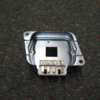When I drive my Group 4 in the dark, needing the headlights, I notice that the headlights are real dim on idle. But then when I get the revs up to 1,500 - 2,000 or so, they become much brighter. I tested the battery at rest and it seems to maintain around 12.25 throughout the day while sitting, but after about a week even with batttery disconnect it gets close to 12. But I figure that may still be ok. Battery seems strong to me because the car starts real easy as well. So I hooked up a meeter just to see what things look like while the car is running. In the video below, it shows volts began around 11.90 just after starting (maybe initially low due to the draw of starting), then as I hit the revs some, it goes up to around 15, and then drops back down. When I saw that, the 15 seemed high to me but maybe that is typical upon higher revs. Anyway, when I see higher volts when reving, to me that seems to say the alternator is charging good (right, eh?). But when I saw it that high, it made me wonder if it is overcharging at that point when it gets close to 15. I red on line that overcharging could lead to busted headlights, etc., but I could not find out what an overcharging number may be. All I found was that just above 13 on idle is about right.
Then I also saw on line that some cars are just like that, with dull headlights on idle and then brighter when you get the revs up. I have never noticed any of this before because I always drive in the day, and just recently took it out in the evening with lights on.
Does all this seem normal?
http://www.youtube.com/watch?v=F4RrmRutdM8
Original Post


